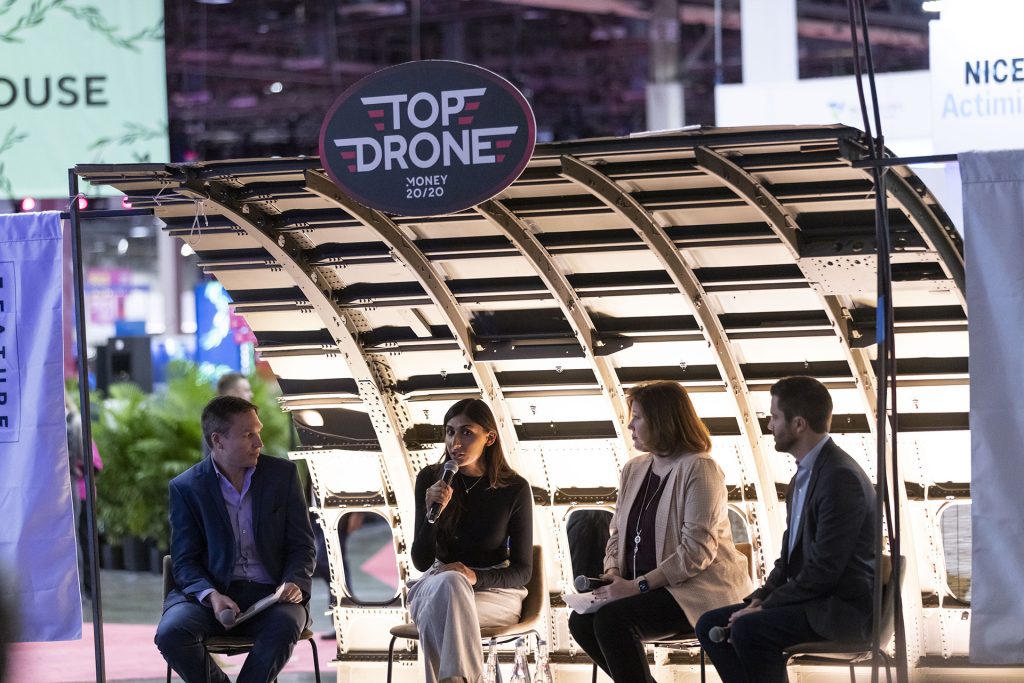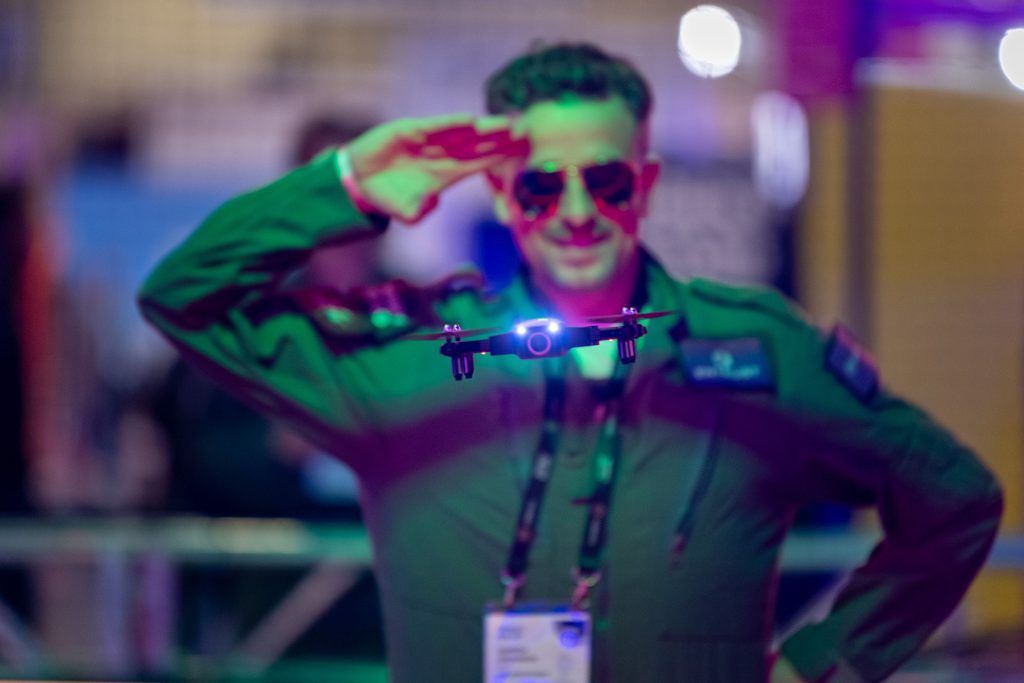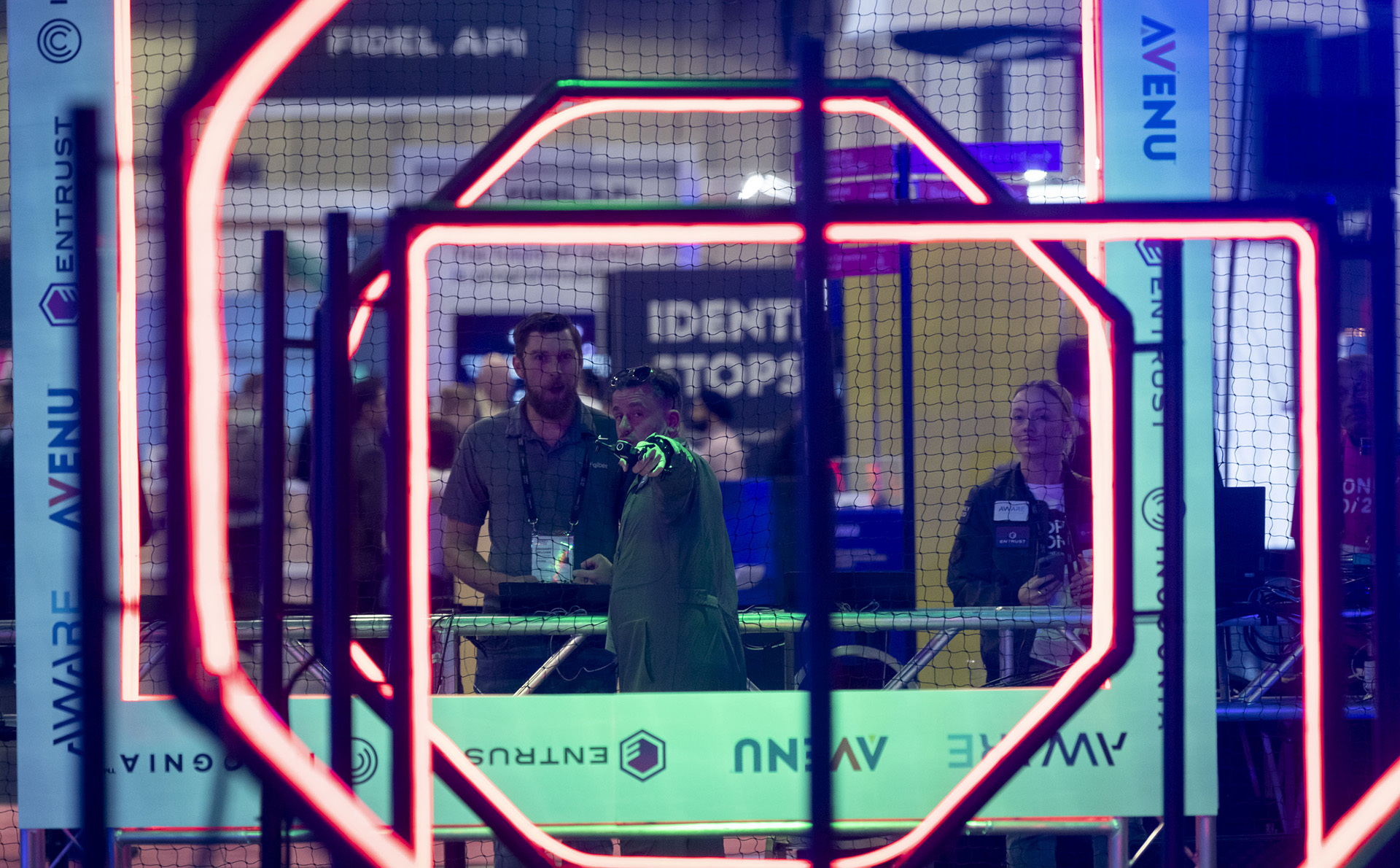WXO Case Studies tell the story of how experts across the Experience Economy have faced challenges, solved problems, and either pioneered new ideas or just figured out how to make something work really well.
We believe these experience-based ideas are highly transferable, and that you should be able to take what they discovered in their sector, and apply it in your area of the Experience Economy. If you’d like to share your own case study with the WXO community, please get in touch.
Mark Slade, Global VP Creative at events company Money 20/20, tells us how he and his team created a B2B event that scored high on both creativity and commercial value…
How do you create a world-class activation experience inside a B2B fintech show that delivers incredible commercial results for both the brand and clients, while really pushing the creative envelope and tapping into the zeitgeist?
In Autumn 2022, Money20/20 created Top Drone in collaboration with immersive brand experience experts The Department for its Las Vegas show.
The objective was to raise the bar for a B2B experience by designing a content and commercial opportunity for Money20/20 sponsors and delegates to join a narrative-driven activation on the show floor. At the same time, we wanted to create the unexpected for a B2B show – something that would be unique, memorable, even “risky”.
What did the Old World look like?
How were things going? What was good or bad?
Top Drone included an indoor LED drone-flying obstacle course with leaderboard and limited edition merch as prizes, VR pre-flight training zone, pilots flying school, drone repair garage, content stage made from an airplane fuselage, and a themed diner and bar with live music. The experience was brought to life with a cast of character actors performing and interacting with visitors.
Money20/20 already had a reputation in the fintech world for being much more than a trade show, but in a sector that is rapidly growing and touching more and more of us as finance and payments interface with our daily lives, we wanted to raise the bar on our creativity further.
Taking inspiration from immersive experiences that we have enjoyed as consumers, we wanted to bring some of that magic into this world. That came with some perceived risks for the brand – would our ‘business’ audience be interested? Would our commercial teams be able to engage sponsors? What value does investing in an experience like this really have for a fintech event?
What was the Call to Adventure?
What was the problem, either “out there” – in society, the industry, the world – or “in here” – the firm, the community?
By thinking of our audience and sponsors not just as financial professionals and commercial partners, but also as humans with emotions and brands with personality, we were able to design an experience which felt fresh and exciting and delivered tangible value back to that audience and to Money20/20.

Who was your Mentor?
Did the people going on this journey have a mentor – either a real person or a way of thinking?
We partnered with immersive experts The Department to co-create the activation. Money20/20 provided the blueprint, story script and acting talent for the supporting experience and the agency provided the technical build and operation of the central drone obstacle course. The marrying of the two creative ideas under one concept created an original activation with multiple audience interaction touch-points.
What was the Inciting Incident?
What changed?
B2B still has a certain stigma about it when it comes to live events: they are corporate, stuffy, dull. At Money20/20 we’re turning to B2C, entertainment, theatre and creative tech for inspiration. Many of our creative team have come from those sectors – they are passionate about creating one-of-a-kind experiences that burn into the memory.
What Trials did you face?
Lack of knowledge? Time? Money? Contacts?
Integrating the sponsors into the experience narrative – which included the audience being “landed” into the space by Landing Signal Officers, risking electrocution by assisting a clumsy drone workshop mechanic, and being screamed at in a pilots’ briefing – was a very different pitch for our commercial sales team.
So to help sell the idea that putting the sponsors into the storyline of the activation would benefit their investment, we created a teaser video and shared the actor scripts with them. Writing the brands in as the “call signs” of the drones made them realise they were actually the stars of the show and not just the sponsors.

Who were your Enemies?
Thankfully, Money20/20 is a progressive and innovative brand with an appetite for taking a “risk”. We were trusted and backed to go for it. That kind of support makes you even more determined to make an idea a success.
Who were your Allies?
Who was on your side or helped you achieve your goal?
Massive kudos to the operations, marketing, sales and content teams who backed the idea and made it a fully integrated experience.
What Tools helped you on this journey?
What’s the closest thing you had to King Arthur’s Sword, or Luke Skywalker’s lightsaber?
The key to the success of Top Drone was the genuine collaboration and lack of egos between Money20/20 and The Department. Coming from 20 years on the agency side before joining Money20/20, it was a joy to co-create with such a lovely, intelligent and creative bunch of people in my first experience working in-house with an agency.
My own experience in designing immersive venues, content and experiences at festivals like Glastonbury, Kendal Calling, Lost Horizon and Boomtown – and being a founding member of the WXO – also really helped when it came to pitching the concept internally.
What was the biggest Ordeal?
What was the toughest challenge you faced?
The budget vs the ideas. Las Vegas is eye-wateringly expensive. Whilst we enjoyed a larger budget than I have worked with previously, it really doesn’t go that far. There were immersion elements of the original design that were not feasible in the space or had to be dialled back to the activation’s location on the show floor and proximity to other features and stands. I would say the “immersive” impact was relatively light touch and relied a lot on the theatrical and set-build elements.
Did you have any ‘Aha!’ moments?

Moments of discovery and inspiration… times when instead of the fog of uncertainty, you suddenly saw the way forward?
I wanted to do a lot more with the script, actors and interplays through the space, but I was acutely aware that this was the first time Money20/20 had created this type of experience. Realising that testing the water with a toe in the shallow end rather than throwing our audience off of a high-dive board was a key moment in being able to actually get the idea signed off.
What was the Reward?
What were the results of all your hard work?
From a delegate experience POV, Top Drone was among the top 3 highest-scoring show highlights in our visitor NPS. From a commercial POV, the four sponsorship opportunities sold out in two weeks and it was one of the most successful lead generation activations to have ever been delivered at Money20/20, with each of our sponsors securing several hundred leads and reporting back glowing reviews from specially invited clients and sponsors.
How does the New World look now?
Now you’ve faced this challenge, what does it mean for you, your organization, and the world?
The success of Top Drone has helped to build confidence in our strategy of creating emotional, memorable moments for our audience in a way that they regard Money20/20 not as a trade show, but as an experience on par with the experiences they love away from work.
For more case studies and learning frameworks from the Experience Economy, check our Case Studies page here.





